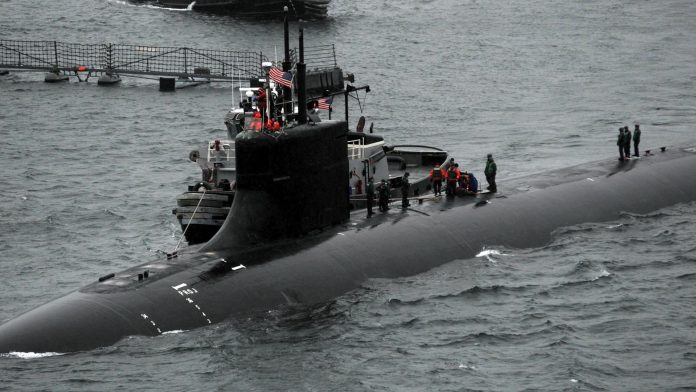The USS Connecticut is one of just three Seawolf-class nuclear-powered fast attack submarines in the U.S. Navy. The highly capable craft will remain out of service until at least late 2026 — more than five years after a critical underwater collision. On Oct. 2, 2021, while navigating international waters near Japan, Connecticut struck an uncharted seamount and sustained significant damage to its bow, sonar dome and ballast tanks. After it was forced to surface, the submarine made a slow journey home, first sailing to Guam, then to California and eventually to Washington state. That’s where it has remained in dry dock at Puget Sound Naval Shipyard.
The Navy initially expected repairs to conclude by 2025, but reporting from The War Zone confirms the timeline has now been pushed back by at least another year.
Command failures create costly consequences
An investigation by the U.S. Navy’s 7th Fleet found the accident was entirely preventable. Poor seamanship, inadequate navigation planning, and a general lack of discipline aboard the vessel were cited as causes. As a result, Vice Adm. Karl Thomas relieved Connecticut’s top leadership, including Cmdr. Cameron Aljilani, Executive Officer Lt. Cmdr. Patrick Cashin, and Chief of the Boat Master Chief Sonar Technician Cory Rodgers, due to “loss of confidence.”
“The incident could have been avoided with sound judgment, prudent decision-making and adherence to required procedures,” Thomas stated in a Navy release following the dismissals.
Repairing a submarine with no spare parts
Connecticut is undergoing a complex Extended Docking Selected Restricted Availability (EDSRA) maintenance period that officially began in February 2023. The repairs include both damage restoration and a deep overhaul to upgrade the vessel’s systems — an effort the Navy hopes will increase its long-term combat effectiveness.
But working on a Seawolf-class submarine presents unique challenges. Only three were ever built: Seawolf, Connecticut and the heavily modified Jimmy Carter. Compounding matters, the production line was shut down in the 1990s due to Cold War budget cuts. As a result, replacement parts, like a new sonar dome, must be specially fabricated. In 2021, Congress approved $50 million for initial repairs, including $10 million specifically for the bow dome, but the total cost of restoration remains classified. When originally built in the 1980s, each Seawolf submarine cost approximately $3.1 billion. That’s more than $10 billion in today’s dollars, making them the most expensive attack submarines ever built.
Strategic value amid rising threat environment
Despite the mishap, the Navy is using the repair window as an opportunity to enhance the Connecticut’s lethality. As one of the most advanced and stealth-capable submarines in the fleet, the vessel is seen as critical to future U.S. naval strategy in the Indo-Pacific. Its capabilities include speeds exceeding 35 knots, under-ice operations and the ability to carry up to 50 weapons. That includes weapons like Mk 48 torpedoes, Tomahawk cruise missiles and Harpoon anti-ship missiles.
With China expanding its naval footprint and increasingly asserting territorial claims in the South China Sea and around Taiwan, the “silent service” will play a pivotal role in U.S. deterrence and potential combat operations.
Suboptimal timing
The urgency of Connecticut’s return is underscored by scheduling pressures on the rest of the Seawolf fleet. The USS Seawolf is slated to enter its own extended maintenance period in 2026, leaving the Jimmy Carter, which is not optimized for traditional attack missions, as the only operational Seawolf for at least some portion of time.
Complicating matters further, the Navy’s next-generation attack submarine program, SSN(X), is also seeing delays. Production is now postponed until the early 2040s, leaving a critical gap in capabilities at a time when global submarine competition, particularly from China, is intensifying.
The USS Connecticut’s prolonged absence reflects more than just the challenges of repairing a billion-dollar submarine. It highlights the fragile state of America’s undersea fleet, the limitations of a shrunken industrial base and the geopolitical urgency to restore every available asset. While the Navy works to bring Connecticut back online, the understanding is clear: every sub counts.

